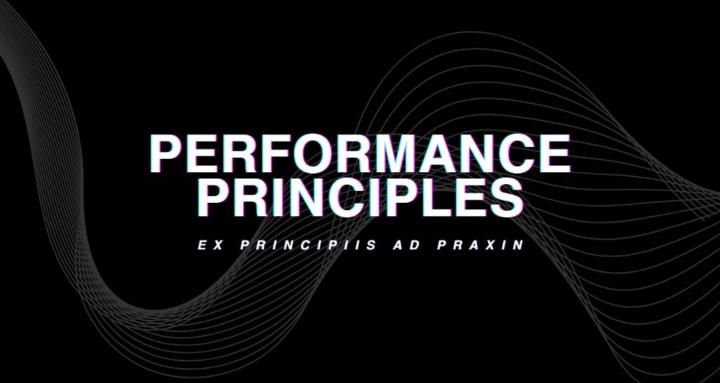
Write something
New Resource Added — Nutrition Guidelines 📑
Coaches, a new resource has been added to the Resources section: Nutrition Guidelines (Client Reference). Talking to a few people in the group, a lot of you are looking for things you can add in to your onboarding and systems to improve the results that you get with your clients. Once I started making education a fundamental part of my coaching process, client results took off and people started consistently referring their friends. This document gives you a clear framework to share with clients, helping them understand and apply the fundamentals of nutrition without overwhelm. ✅ Use it as a teaching tool in your sessions/check-ins. ✅ Send it directly to clients as part of their onboarding. ✅ Combine it with the Google Sheets Tracking Template (Coming Soon) to build long-term consistency. Head to Resources to download it now 👇 https://www.skool.com/performance-principles/classroom/3170b288?md=3c3fd00faa97449db2be5057fd2f08c7
1
0
New Lesson Uploaded: Foot Pressure in Leg Press vs. RDL
Got a great question in the chat from @Brendan O Donoghue about how foot pressure should be distributed on a leg press compared to an RDL, and why it matters for both muscle activation and joint safety. I’ve uploaded a full breakdown in the Principle in Practice series — covering: - Why mid-foot pressure is the foundation for max force production - How foot pressure influences motor unit recruitment and hypertrophy - Why “toes-only” or “heels-only” strategies create more sensation but less effectiveness - The impact of pressure on joint coordination up the chain - Practical cueing strategies to correct imbalances Bottom line: full-foot contact = max load, max output, and safer, more effective training. 👉 Check out the lesson in the Principles In Practice classroom for the full breakdown.

Foot Pressure
Well lads just said id shoot this in here someone else might take some value from this question. Mike Can you explain how foot pressure should be distributed on a leg press compared to an RDL, and why that difference matters for muscle activation and joint safety? Ex Gym leco hip press Thanks BOD
Why “Add More Weight” is Failing Your Clients
I made this quick lesson to start off the response to one of the questions in the group, asking how to know when to progress/ regress exercise. So I though before we get into that, we should probably introduce the opportunities that we have available to us to actually progress and regress clients. Most coaches inherit the idea of progression from bodybuilding and powerlifting: More load = more progress. It works… until it doesn’t Here's the problem: - Load-only progression ignores movement quality - It bypasses skill, stability, and positional strength - It pushes clients into patterns they can’t control — the fastest route to pain and injury When load is the only lever you know how to pull… progress stalls. Pain, stiffness and niggles become inevitable. The body adapts to the exact challenge you give it. If you want a client to stay pain-free and keep making gains for years, you must progress the pattern, not just the load... That means knowing how to adjust: - Stability → Can they own the position? - Range of Motion → Can they control it everywhere they go? - Skill Complexity → Can they coordinate under fatigue? - Load / Intensity → Yes, still important — but one of six levers - Base of Support → Can they stay balanced when the floor gets “smaller”? - Centre of Mass → Can they stay stacked with their COM over their BOS, using different loading parameters. Why This Matters Progressing through these levers, with intent means: ✅ Clients build resilience in every position ✅ Patterns become bulletproof before load increases ✅ Progress never stalls because you’re not stuck on one progression tool ✅ You avoid the “load ceiling” that breaks most lifters Save the chart below. This is a framework you can use to make sure clients get stronger, move better, and never lose momentum, without flirting with injury.
0
0

How I Tripled My Online Client Base...
Most coaches think the problem is content or followers... In reality, it’s usually trust. People aren’t paying €300/month unless they believe you get what they’re dealing with and can actually help them fix it. The fastest way I’ve found to build that kind of trust? A simple movement assessment. No selling. Just: Here’s how I coach. Here’s how I think. Let’s look at what’s going on in your body. It gave people clarity. It gave me authority. And it did all the heavy lifting without needing a sales call. Here’s what it looked like month by month: Month 1 Rolled out the Movement Assessment offer 17 assessments 9 follow-up calls 5 new clients Month 2 Started getting referrals... 12 new assessments 11 calls 7 new clients Month 3 15 new assessments 8 calls 6 new clients By the end of 90 days, I went from 15 to 47 online clients. No ads. Just one high-trust offer that helped people make sense of their pain and training. If you’re a coach trying to grow — start there. Build something that actually helps someone before they pay you. Make them feel coached, not sold.Let them walk away with insight they didn’t have before. That’s what builds trust. And trust is what gets people to say yes.
1-11 of 11

skool.com/performance-principles
Helping personal trainers and coaches master performance, pain, and progression through real-world coaching and education.
Powered by

